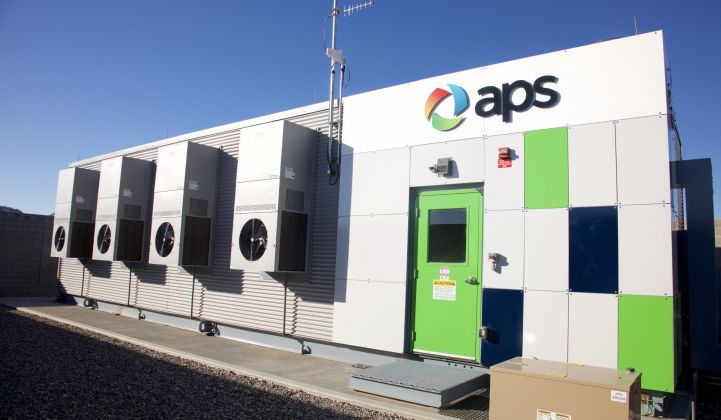Fluence has dispatched a team of experts to help utility Arizona Public Service determine what caused an explosion at one of its grid-scale battery facilities. The explosion on Friday reportedly left four firefighters injured, including three who were sent to a burn center.
Firefighters responded to a call on April 19 after smoke was seen rising from APS’ McMicken Energy Storage facility, one of two identical 2-megawatt/2-megawatt-hour grid-scale batteries the utility installed in 2017 in Phoenix’s growing West Valley region.
According to local press reports, the firefighters were inspecting the facility’s lithium-ion batteries when they were hit with an explosion. Several of the firefighters received chemical burns, the local fire department told the Arizona Republic.
The firefighters were later reported to be in stable condition.
APS, the state’s largest investor-owned utility, said in a statement on Twitter that it is still investigating the cause of the “equipment failure.”
“Our top priority is the health and safety of those first responders,” the utility said in its statement. “We will continue to work closely with response agencies on scene.”
The battery systems were supplied by AES Corp., an early leader in grid storage, which last year finalized the merger of its storage business with that of Germany’s Siemens into a new company known as Fluence.
“In response to the Friday evening fire at the APS facility, Fluence has dispatched a team of its top safety and technical leaders to Arizona who are currently on site to support,” a Fluence spokesperson said in an emailed statement over the weekend.
“Our team is working closely with Arizona Public Service and local officials and offering any assistance needed to ensure safe conditions and to thoroughly investigate the cause of the incident,” the spokesperson said.
Ravi Manghani, director of energy storage at Wood Mackenzie Power & Renewables, cautioned that it's "extremely early and premature to jump to conclusions" as to what happened at APS' facility.
While battery fires have been a major cause of concern for the storage industry, they have largely been limited to South Korea thus far, Manghani said.
Other equipment at electrical substations, including transformers, can also spark fires.
Still, the stakes are high for APS and the storage sector more broadly as the investigation unfolds. Just two months ago, APS announced plans to build 850 megawatts of battery storage by 2025, paving the way for ever greater amounts of solar energy on its grid. A request for proposals is currently underway, Manghani noted.
"If — and that’s a big if — the fire and ensuing explosion are traced back to batteries, it will certainly be a temporary shock for storage prospects," he said.
APS has previously had problems with grid storage systems — including a smaller fire at a different facility in 2012.
The U.S. energy storage market reached new heights in 2018, but is only at the beginning of an anticipated growth spurt, with the market expected to double in 2019, then triple in 2020.
Battery installations reached 311 megawatts and 777 megawatt-hours last year, according to WoodMac and the Energy Storage Association.
Utilities and wholesale market operators across the U.S. are now thinking seriously about integrating large amounts of storage capacity onto their systems, and many of the country’s leading renewables developers are aggressively pursuing storage opportunities.
Last month state regulators in Hawaii approved six grid-scale solar-plus-battery storage projects for the Hawaiian Electric Company, which is set to add 274 megawatts of solar and almost 1 gigawatt-hour of storage capacity. Among the developers of those projects are AES, Clearway Energy, and Canada’s Innergex.




